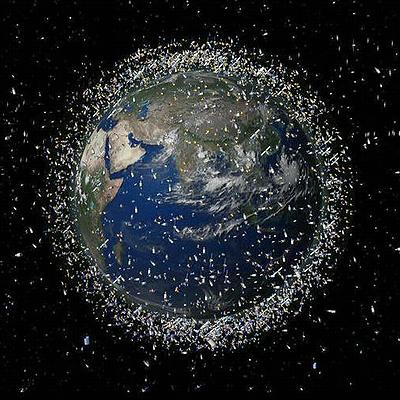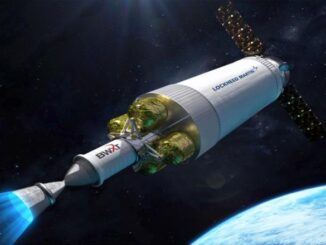
WASHINGTON, DC, October 3, 2023 (ENS) – The Enforcement Bureau of the U.S. Federal Communications Commission Monday cracked down on the publicly traded Dish Network Corporation over the TV and technology company’s failure “to properly deorbit” its EchoStar-7 satellite at the end of its mission. The EchoStar-7 was used to carry Dish’s direct broadcast satellite service.
This marks a first in space debris enforcement by the Commission, which now has stepped up its satellite policy efforts, it said in a statement.
The settlement includes an admission of liability from the company and an agreement to adhere to a compliance plan and pay a $150,000 fine.
The FCC’s investigation found that the company violated the Communications Act, the FCC rules, and the terms of the company’s license.
The company’s violation was relocating EchoStar-7 satellite to a disposal orbit far below the elevation required by the terms of its license. “At this lower altitude,” the FCC said, “it could pose orbital debris concerns.”

Enforcement Bureau Chief Loyaan Egal said, “As satellite operations become more prevalent and the space economy accelerates, we must be certain that operators comply with their commitments.”
“This is a breakthrough settlement, making very clear the FCC has strong enforcement authority and capability to enforce its vitally important space debris rules,” Egal said.
FCC rules prohibit the use or operation of any apparatus for the transmission of energy or communications or signals by a space or earth station except under and in accordance with a Commission-granted authorization.
This vital rule prevents interference in satellite operations and allows the Commission to coordinate and evaluate those operations, including minimizing the creation of space debris and ensuring responsible end-of-mission satellite disposal.
Dish Network launched its EchoStar-7 satellite in 2002. In an orbital debris mitigation plan later filed by Dish, and approved by the Commission in 2012, the company committed to bring the satellite at the end of its mission to an altitude of 300 kilometers (km) above its operational geostationary arc.
In subsequent filings with the FCC, Dish estimated that, based on the remaining fuel and projected operational parameters, the satellite’s end-of-mission deorbit maneuvers would take place in May 2022.
However, in February 2022, Dish determined that the satellite had very little propellant left, which meant it could not follow the original orbital debris mitigation plan in its license.
Dish ultimately retired the satellite at a disposal orbit approximately 122 km above the geostationary arc, short of the disposal orbit of 300 km specified in its orbital debris mitigation plan.
The Consent Decree is online at: https://docs.fcc.gov/public/attachments/DA-23-888A1.pdf.
It is estimated that more than 10,000 satellites have been launched into space , with over half of them now out of use.
The first satellite, Sputnik I, was launched into orbit in 1957. At the end of June, there were 11,330 individual satellites orbiting the Earth, according to the Index of Objects Launched into Outer Space, maintained by the United Nations Office for Outer Space Affairs. But not all of them are operational; roughly 48 percent of them are not functioning.
To give an idea of the pace of launches and the density of satellites circling the planet in low earth orbit, StarLink, a satellite internet constellation operated by SpaceX, has conducted 66 launches so far this year, each rocket carrying many mini satellites that are released into low Earth orbit. Using them, the company provides internet service to countries around the world.
But low earth orbit is becoming crowded, and the mishandling of Dish’s failure “to properly deorbit” its EchoStar-7 satellite by allowing it to orbit closer to the Earth is becoming a real cause of concern.
Satellite explosions and collisions are the source of most debris in orbit, according to the National Aeronautics and Space Administration, NASA.
More than 25,000 objects larger than 10 cm are known to exist in Earth orbit, NASA says. The estimated population of particles between 1 and 10 cm in diameter is approximately 500,000. The number of particles larger than 1 mm exceeds 100 million.
There are around 9,000 metric tons of space debris in Earth orbit, NASA says, things like old rocket stages, obsolete spacecraft, and hardware released during missions.
NASA chief and former U.S. Senator Bill Nelson told the BBC in July 2022 after China’s Long March 5B rocket fell back to Earth that space junk was a “major problem.”
“Even a paint chip… coming in the wrong direction at orbital speed, which is 17,500 miles an hour [could] hit an astronaut doing a spacewalk. That can be fatal,” Nelson warned.
Featured image: Earth is now encircled with a ring of manufactured objects in orbit. (Artwork courtesy Massachusetts Institute of Technology, MIT)



